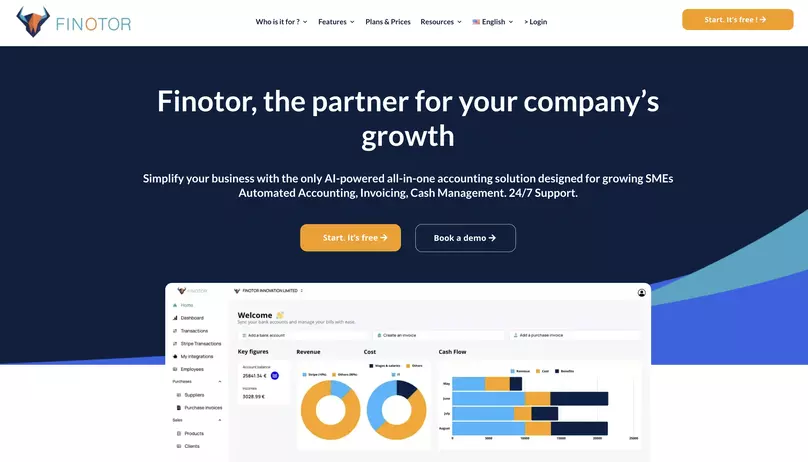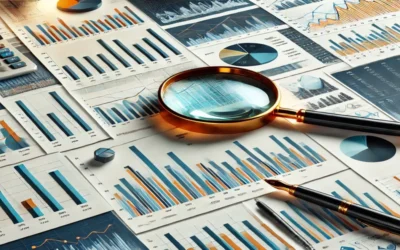Contents
The stock of a company must be counted, and this, whatever the type of stock (goods, raw materials…). The stock of a company represents an essential element of the annual accounts.
1. Definition
A company’s inventory is a set of goods intended for sale in the course of the company’s business or for consumption in the company’s production process. There are two categories of items in inventory accounts. The first category includes inventories of supplies, raw materials, goods and products. The second category includes work-in-progress, work-in-process and work-in-progress.
“The inventory of a company includes all goods intended for sale or for use by the company.
Inventories are mentioned in several components of the annual accounts. In the balance sheet, the gross amount of inventories is shown on the asset side of the balance sheet together with any depreciation and the net amount of inventories. Then, in the income statement, the changes in inventory compared to the previous year are mentioned. Finally, the accounting rules relating to inventories are mentioned in the accounting notes.
Read more : What Is An Inventory? Definition, Examples, Tips
2. Inventory
All persons or companies that are merchants must take a physical inventory of their stocks at least once a year. When a perpetual inventory is set up, the company can carry out its physical inventory on a date other than the closing date of the fiscal year. This system also allows for rotating physical inventories. Secondly, if there is no perpetual inventory system, the physical inventory must be carried out at the time of the company’s fiscal year end.
“Inventories must be valued at cost, unless the value of the inventory fluctuates in relation to a price”
3. Valuation of inventory
All stocks of a company must be valued, regardless of the type of stock (goods, raw materials, finished products…). The stocks of raw materials, goods or supplies must be valued at their acquisition cost. While the stocks of products (products in progress or finished products) must be valued at their production cost. The concept of inventory cost is broader than that of purchase price. Indeed, the cost of an inventory includes all acquisition, processing and other costs incurred to bring the inventory to its current location and condition.
The acquisition cost of raw materials and goods is the sum of the purchase price of these goods and all directly related ancillary purchase costs.
Here is the formula: acquisition cost = purchase price + incidental purchase costs
The production cost is the sum of the acquisition cost of materials consumed in the production process and the direct and indirect expenses of the company during this process.
The formula is therefore as follows: production cost = acquisition cost of materials + direct production costs + indirect production costs
A more accurate and accounting approach to inventory in a company
Two very important terms for inventory management and accounting in a business
For a company which manages an inventory, there are 2 concepts to know, to master and to control in an accounting of the inventories of a company:
The Cost of Goods Sold (COGS).
The COGS represents the direct costs of production of all the goods sold that a company can sell.
Ending Inventory (EI).
The EI represents the value of available and unsold inventory at the end of an accounting period.
1- Cost of Goods Sold (COGS)
A) What is the cost of goods sold (COGS)?
The cost of goods sold (COGS) is a very important element to consider when measuring the profitability and value of inventory in a company.
The COGS is the amount that the products cost to manufacture for a company. It includes all the elements that make up the product and all that was necessary to assemble it: materials, but also labor, energy consumption of production tools,…
The COGS does not include costs that are not directly linked to the production process – such as storage, order preparation, shipping,… But also, the costs of engineering, marketing and distribution.
COGS is used to determine the amount of gross margin achieved on a company’s sales. For a business owner, it is important to know what it costs to produce the products he sells.
Here is an example :
A company sells a product with a sales value of 1000 € and that the COGS is 50 €, the company has therefore made a gross profit of 50 €.
In this example the calculation is simple. But imagine for a company that it is necessary to determine the COGS by taking into account several machines which spend energy in electricity. It is difficult in this case to make realistic and precise the amount of electricity on a segmented, complex chain of production of a product.
Subcontracting makes it easy to calculate the COGS, since it is a matter of taking into account the supplier’s invoice and relating this amount to a unit cost. If you manufacture yourself the products you sell, this is more complicated and the possibilities of errors or deviations from the real COGS is great.
Then, all inventory that has been sold will be recorded in the cost of goods sold account on the income statement at the time of the annual balance sheet.
B) Why calculate the cost of goods sold (COGS) in accounting ?
The cost of goods sold (COGS) is an important accounting figure that tracks the direct costs associated with producing a company’s goods or services. This figure is often used to calculate the company’s gross profit, which is the total sales revenue minus the cost of goods sold. By calculating the COGS, companies can assess their cost structure and make more informed decisions on how to price their products and services.
The calculation of the cost of goods sold is an essential part of the accounting process, as it helps companies measure their profitability and identify trends in their cost structure. It is also used to calculate the company’s gross margin, which is the difference between sales revenue and the cost of goods sold. This information can be used to identify areas of cost savings and to ensure that the company is maintaining a healthy profit margin.
COGS is typically calculated by adding up the cost of raw materials, direct labor, and factory overhead for the period. Raw materials include any items that are directly used in the production process, such as components, supplies, and packaging. Direct labor costs cover the wages of employees directly involved in the production process, while factory overhead covers any indirect costs associated with production, such as rent, utilities,
C) How to calculate COGS?
To calculate the cost of goods sold (COGS), you must:
- Define an accounting period. This can be at the end of a fiscal year or for an interim balance sheet during the current fiscal year
- Determine the costs that go into the entire production process of your products. For example: raw materials, human resources, tools, energy, etc.
- Take the cost of the beginning inventory (BI).
- Add to the BI the cost of the newly produced inventory during the period in question.
- Subtract the leftover and unsold inventory at the end of the accounting period.
D) Formula of Cost of Goods Sold (COGS)
COGS= (Beginning Inventory) +(– (Ending Inventory)
2- Ending inventory (EI)
A) What is the Ending inventory (EI) in accounting ?
The EI in accounting is a figure that represents the value of goods that a business has on hand at the end of an accounting period. It is an important component of the cost of goods sold (COGS) calculation and is typically calculated by taking the beginning inventory for the period and adding any purchases made during the period, then subtracting any sales or other adjustments.
The EI is an important component of a business’ profitability and can indicate whether the business is efficiently managing its inventory or not. In addition, it can be used to calculate the cost of goods sold, which can be used to assess the performance of the business.
B) Why calculate the Ending inventory (EI) ?
EI is the value of a company’s inventory at the end of an accounting period. It is an important component of a company’s balance sheet, as it affects both the company’s profitability and its assets. Calculating ending inventory helps the company to better understand the value of its assets and to make more informed business decisions. To calculate EI, a company first needs to calculate the beginning inventory.
This is the value of inventory at the start of the accounting period and is usually determined by a physical inventory count. The company then adds the cost of any inventory purchases during the accounting period, as well as any additional costs associated with the purchase, such as shipping and handling. This amount is then subtracted from the beginning inventory to arrive at the ending inventory. Once the ending inventory is calculated, it can be used to calculate the cost of goods sold (COGS).
This is the amount of inventory that the company sold during the accounting period and is an important component of the company’s income statement. The COGS is calculated by subtracting the ending inventory from the beginning inventory. The resulting number is then multiplied by the cost of each unit sold, which is usually the cost of the inventory when it
C) How to calculate the Ending inventory (EI) ?
Ending inventory (EI) is the balance of inventory that a business has on hand at the end of an accounting period.
It is calculated by taking the beginning inventory balance, adding net purchases (purchases minus returns and allowances), and subtracting the cost of goods sold.
Formula: EI = BI + Net Purchases – COGS
Where:
EI = Ending Inventory
BI = Beginning Inventory
Net Purchases = Purchases – Returns and Allowances
COGS = Cost of Goods Sold
Example:
Company XYZ has the following information:
Beginning Inventory = $100,000
Purchases = $200,000
Returns and Allowances = $20,000
Cost of Goods Sold = $180,000
Using the formula above, the Ending Inventory of Company XYZ can be calculated as follows:
EI = BI + Net Purchases – COGS
EI = $100,000 + ($200,000 – $20,000) – $180,000
EI = $100,000 + $180,000 – $180,000
EI = $100,000
C) What is the formula to calculate the Ending inventory (EI) ?
EI = Beginning Inventory (BI) + Purchases – Cost of Goods Sold (COGS)
To accurately assign a value to unsold inventory, companies must consider factors such as the purchase date, the cost of the inventory, the sales price and the remaining useful life of the inventory item.
There are several methods used to value inventory, including :
– First In, First Out (FIFO),
– Last In, First Out (LIFO)
– Average cost methods.
All three methods use the cost of goods purchased and the cost of goods sold to calculate the value of unsold inventory.
Depending on the company‘s financial reporting requirements, one of these methods may be used to calculate the cost of inventory on hand at the end of the period. Once the cost of inventory is determined, it can then be used to calculate the total value of the unsold inventory figure.
Though the process of inventory valuation can be complex, it‘s essential to get it right. Accurately assigning a monetary value to unsold inventory is the only way to obtain an accurate picture of the company‘s financial health. Without this information, companies may be unable to determine their actual profitability and make sound business decisions.
3- First In, First Out (FIFO)?
First In, First Out (FIFO) is a method of inventory control and resource allocation that is based on the principle that the first items to enter the system are the first items to be used, sold, or processed. FIFO is commonly used in accounting, inventory management, and operations management.
In accounting, FIFO is a method of inventory valuation that assumes the first items purchased are the first items sold. This means that the cost of goods sold (COGS) is based on the cost of the oldest items in inventory. This method is used to match the cost of goods sold with the revenue generated from their sale. In inventory management, FIFO is a method of managing inventory that ensures that the oldest items in stock are the first items to be used or sold. This ensures that inventory remains fresh and reduces the risk of spoilage or obsolescence.
In operations management, FIFO is a method of scheduling tasks and activities so that the first items to enter the system are the first items to be processed. This method is used to ensure that tasks are completed in the most efficient order, and that resources are used most effectively. Overall, FIFO is a simple but effective method
4- Last In, First Out (LIFO)
Last In, First Out (LIFO) is a method of organizing data in which the items that were last added to the collection will be the first ones to be removed. It is the opposite of First In, First Out (FIFO), which is the more commonly used method of organizing data. The concept of LIFO is used in many different contexts, such as business, computing, and accounting.
In business, it is often used to refer to the way in which inventory is managed. When new inventory is added to the collection, it is added to the back of the collection and the items that were already there are pushed further back. This way, the items that were last added to the inventory will be the first ones to be sold. In computing,
LIFO is used to describe algorithms that operate on a stack data structure. This type of data structure stores items in a last-in-first-out order and is often used in programming languages. In accounting, LIFO is used to describe the way in which costs are calculated. The last costs to be incurred will be the first ones to be deducted from revenue. This can be beneficial in certain situations, as it can help to reduce the amount.
5- Average cost methods
The method of average costs, also known as the average cost method, is a cost accounting technique that is used to determine the average cost of a product by dividing the total cost of production by the total number of units produced. This method is used to determine the cost of production for a given period of time. The average cost method is based on the concept of fixed and variable costs.
Variable costs are costs that vary with the number of units produced, such as raw materials and direct labor. Fixed costs are costs that remain the same regardless of the number of units produced, such as overhead and administrative costs. The average cost method is calculated by first determining the total cost of production for the period in question. This figure is then divided by the total number of units produced to get the average cost per unit.
This average cost per unit is then multiplied by the number of units sold to get the cost of goods sold (COGS). The difference between the total cost of production and the COGS is the gross profit. The average cost method is useful in helping to determine the cost of production and the overall profitability of a product. It is also useful in helping to determine pricing strategies, as the average cost per unit can be used to set









